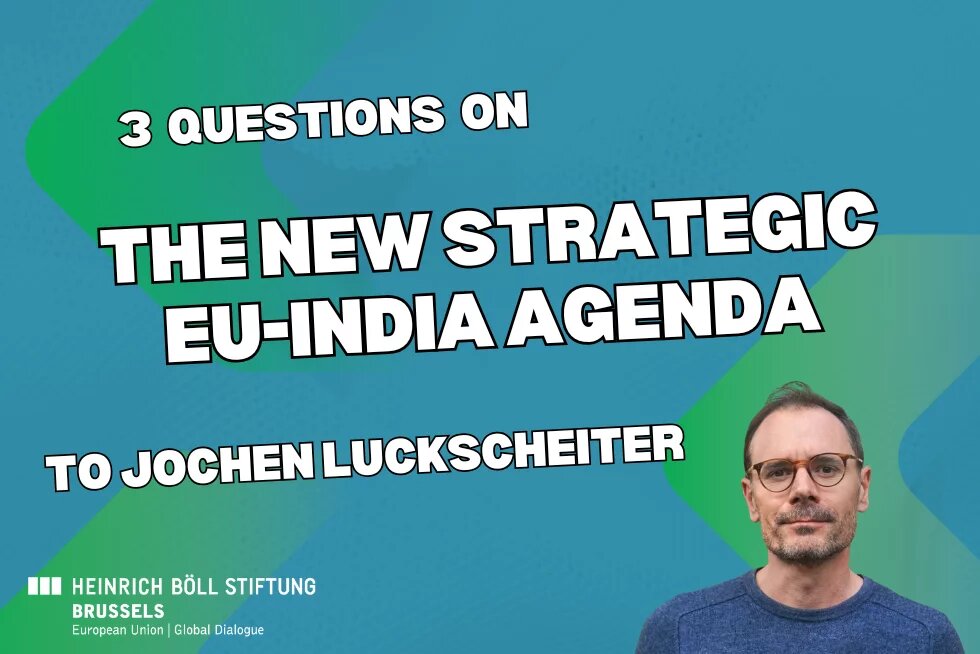The European Commission and the EU's High Representative adopted a Joint Communication presenting a package of proposals for a ‘New Strategic EU-India Agenda' on 17 September 2025. The EU and India appear ready to take their strategic partnership of 20+ years to the next level amid geopolitical shifts. Together, they set out to "boost shared prosperity, strengthen security, and tackle major global challenges". Developing such an agenda constitutes an opportunity, yet not without its own challenges. Thus, Dr. Katharina Emschermann asked 3 questions about the EU-India relationship status to Jochen Luckscheiter, director of the Heinrich-Böll-Stiftung's India office in New Delhi.

1. How would you characterise EU-India relations, how are they changing and why?
The EU-India relationship is evolving rapidly in response to major geopolitical and economic shifts. Both sides are keen to elevate the partnership, though greater depth brings added complexity. Areas of convergence include digital public infrastructure, green transition, and semiconductor value chains - sectors where global competition and supply-chain pressures encourage both sides to strengthen strategic autonomy. At the same time, differences persist - on data protection, intellectual property, sustainability standards, and climate justice. With its Joint Communication, the EU proposes a “mutually enabling” partnership with India across trade, investment, technology, security, and connectivity, while both sides will have to navigate persistent differences shaped by their distinct political identities and geographic contexts.
2. Where do you see most potential for progress, what are potential problems?
Great potential lies in digital and technology cooperation, where India’s digital infrastructure experience and the EU’s regulatory framework could create a globally relevant match. Green transition also offers opportunities, particularly in renewable energy and green hydrogen. However, challenges arise where shared ambitions meet structural differences. On trade, sustainability standards, carbon border measures, and intellectual property tend to be seen in India as protectionist. On climate, the EU’s emphasis on rapid decarbonisation contrasts with India’s focus on equity and development space. In digital governance, divergences on privacy, data localisation, and surveillance remain significant. Progress will depend on whether both sides can manage these differences without undermining overall strategic convergence.
3. What will be the signals to watch for on the road towards a Joint EU-India Comprehensive Strategy?
Key signals will be whether dialogue translates into action. A breakthrough in the ongoing negotiations for a free trade agreement would indicate mutual trust and economic anchoring. Signs of alignment on sustainability or data standards would show that differences can be bridged. Outputs from the Trade and Technology Council, such as the 2023 semiconductor Memorandum of Understanding, would demonstrate momentum. Aligned announcements on climate initiatives or regional connectivity would indicate that the partnership carries global weight. Taken together, these signals would suggest the relationship is moving from rhetoric to reality.
Meanwhile, India’s ongoing trade negotiations with the United States - amid high tariffs on many Indian exports - make a successful EU-India deal both strategically important and politically complex, as India has to balance attention and resources while the EU is being pressured by the United States to also impose punitive tariffs on India over its Russian oil imports.
This article first appeared here: eu.boell.org